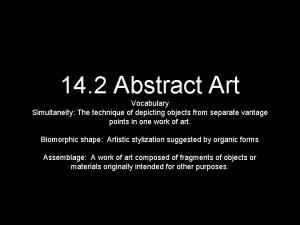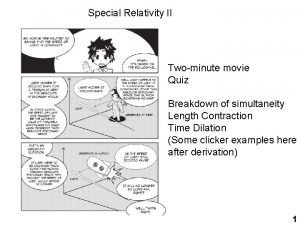Perceptual Learning on Simultaneity and Temporal Order Judgments

- Slides: 1

Perceptual Learning on Simultaneity and Temporal Order Judgments Poster # 56. 3003 Nestor Matthews 1, Leslie Welch 2, Rebecca Achtman 1 1 Denison University - Department of Psychology; 2 Brown University - Cognitive, Linguistic & Psychological Sciences Introduction Results Method Ø SJs and TOJs both depend on arrival-time differences, yet may rely on distinct boundaries in temporal decision space. Example Trials Temporal Order Judgment (TOJ) Which Came First? Letter or Number E + D Reaction Time n = 47 + 3 time + N n = 47 Discussion Ø Under identical retinal stimulation, SJs and TOJs exhibited distinct reaction time patterns, and temporal precision failed to exhibit transfer-of-training effects. Order Judgment: Letter 1 st Synchrony Judgment (SJ) Did the Letter & Number appear at the Same time or Different times? D + 3 + N time + E Sync Judgment: Same time Temporal Precision SJ Training Group & TOJ Control Group Training schedule RSVP Stream Two target types D 3 + X + R 67 ms [red letter] 67 ms Time Days 2 - 5 Day 6 SJ Training Group n=9 Pre-train TOJ SJ Training Post-train TOJ Control Group n=9 TOJ Decision-Related Neural Units “Read-Out” Stimulus-Driven Neural Units Targets always in different hemifields + 67 ms [black number] Day 1 Ø The results demonstrate distinct decisionrelated and/or “read-out” factors 2 – rather than stimulus-driven neural factors – set the limit on SJ and TOJ performance. E + D + 67 ms C + TOJ Training Group & SJ Control Group E 67 ms References + 67 ms 3 + TOJ Training Group Pre-train SJ n = 11 N 67 ms + 67 ms Y + TOJ Training Post-train SJ 1. 2. P 67 ms RSVP stimuli were identical for both tasks 1 SJ Control Group n = 10 SJ Matthews et al. (2013). Petrov, et al. (2005). PMID: 23818678 PMID: 16262466 SJ Poster: http: //denison. edu/~matthewsn/vss 2015 matthewswelchachtman. html

